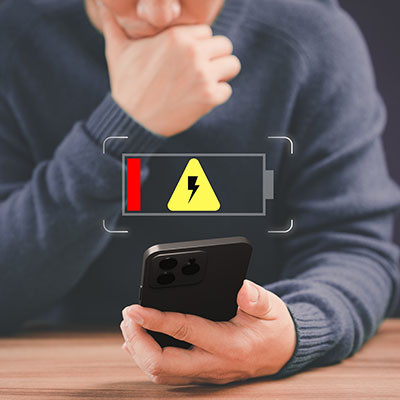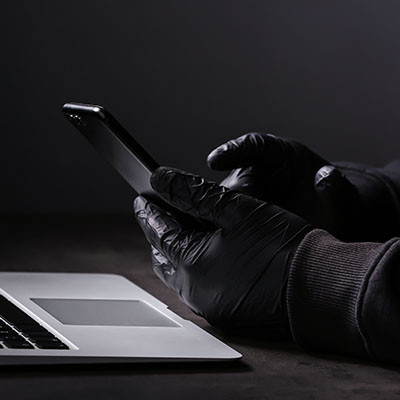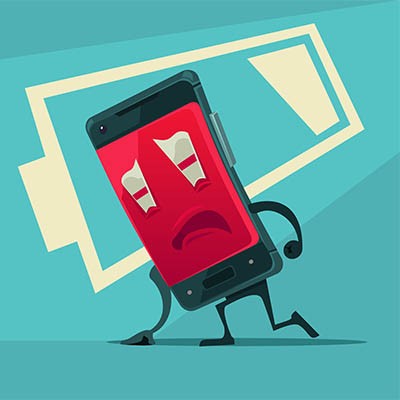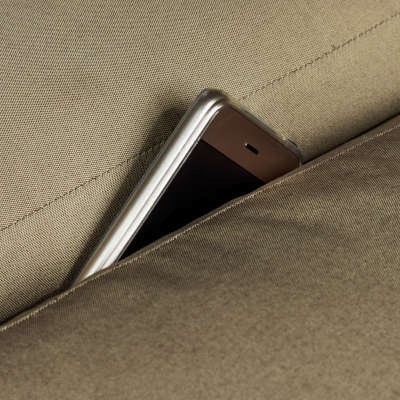This year, we’re making it our goal to help more businesses than ever, and a big part of that is making sure they have the best technology available. If you're not happy with your current phone system, we've got great news. You don’t have to stick with old-school landlines—there’s a better option called Voice over Internet Protocol (VoIP).
PCSOFT Blog
In a perfect utopia, you would never have to deal with random papers or sticky notes scattered all over your desk. Going paperless isn’t just trendy—it helps you stay organized, save money, and do something good for the environment. But what does it take to go fully paperless? Let’s take a look at a paperless strategy and what it can do for you.
One of the worst-case scenarios is losing your smartphone, and it’s easy to see how something as simple as a lost or stolen device could cause major issues. That’s why it’s important to take security seriously and be proactive, rather than waiting for a problem to occur. Here are four steps you can take now to reduce the risk of a lost or stolen device becoming a serious problem for your business.
Apple rarely sends out alerts about threats, and that is because threats that target Apple devices are somewhat rare in the first place. However, on April 10, 2024, Apple saw fit to send one to certain users in 92 nations by email. These notifications were “designed to inform and assist users who may have been individually targeted by mercenary spyware attacks.” What does this mean, exactly?
Smartphones are incredible productivity tools that anyone can take advantage of for personal computing or business purposes. Thanks to the large amount of mobile applications available, there are countless ways that people can reimagine various aspects of their lives for the better. To help you out, we’ve put together four of our favorite smartphone tips that you might find useful.
When your smartphone battery dies, you’re left feeling inconvenienced and, likely, pretty annoyed. Unless you’re carrying your charger on you at all times, you’ll need to find a solution to your battery charge issues. The solution, like with many other technological issues, is to be proactive and take action to keep your battery from dying in the first place. That’s what we’re here to discuss today.
As one of the world’s most popular messaging applications, WhatsApp is a well-known tool, even in the business world. More notable is that WhatsApp—a platform known for its end-to-end encryption and security—now has a modified and unofficial version called YoWhatsApp, which has been deploying malware to unsuspecting users.
With all the doom and gloom surrounding cybersecurity, it’s easy to get lost in the negative aspect of technology advancement. That being said, however, we do really love technology, and advancements in smartphone technology, in particular, have made amazing strides and led to great achievements in business and elsewhere. We just wanted to take today to appreciate smartphones and how incredible they are.
Nothing says “panic mode” quite like a dying smartphone. To avoid falling into this predicament, many users keep their phones plugged in to keep the battery topped off. A common saying is that this practice is actually bad for battery life, but how much truth is there in this statement? Let’s take a deeper dive and see if we can separate the fact from fiction, as well as what factors do influence your smartphone’s battery life.
Uh oh—your mobile device is missing.
If you ever find yourself in this situation, time is of the essence… particularly if you have reason to believe that your device was stolen. To help prevent things from getting messy, we’ve put together a checklist for you to run down in case you suddenly can’t find your smartphone or tablet.
It isn’t like anyone actively means to lose their smartphone, but stuff happens. After all, many of us have our device in-hand for most of our waking hours, so there’s plenty of opportunities for it to be left behind somewhere. Fortunately, there are ways that you can set up your smartphone to help track it should it be lost, whether it’s an Apple device or on the Android platform.
Smartphone users know how hot their devices can get, seemingly without reason, and how unnerving that can be. No wonder—these heat levels can damage the device itself. This means it is very important to try and control its temperature as best you can. We’ve put together some tips to help you keep your phone from overheating.
With the COVID-19 pandemic over a half a year old now, people have been pretty resilient and found their footing after the shock of being sent home from work early in March. Many people have actually returned to work, joining millions of essential workers that worked through the government-mandated shut down periods. There are millions of others, however, who are still working from home, as their businesses try to keep operations running smoothly with a remote workforce.
Remember a few months ago when Google and Apple joined forces to come up with a system to help state and local governments establish a COVID-19 Exposure Notification system? If you didn’t, you aren’t alone. A lot has been going on lately. Just to catch you up, the two tech giants recently pushed out an update across nearly all modern smartphones so state and local governments can deploy apps to notify people when they may have been exposed to COVID-19. Let’s do a deep dive on what this means for your privacy.



















